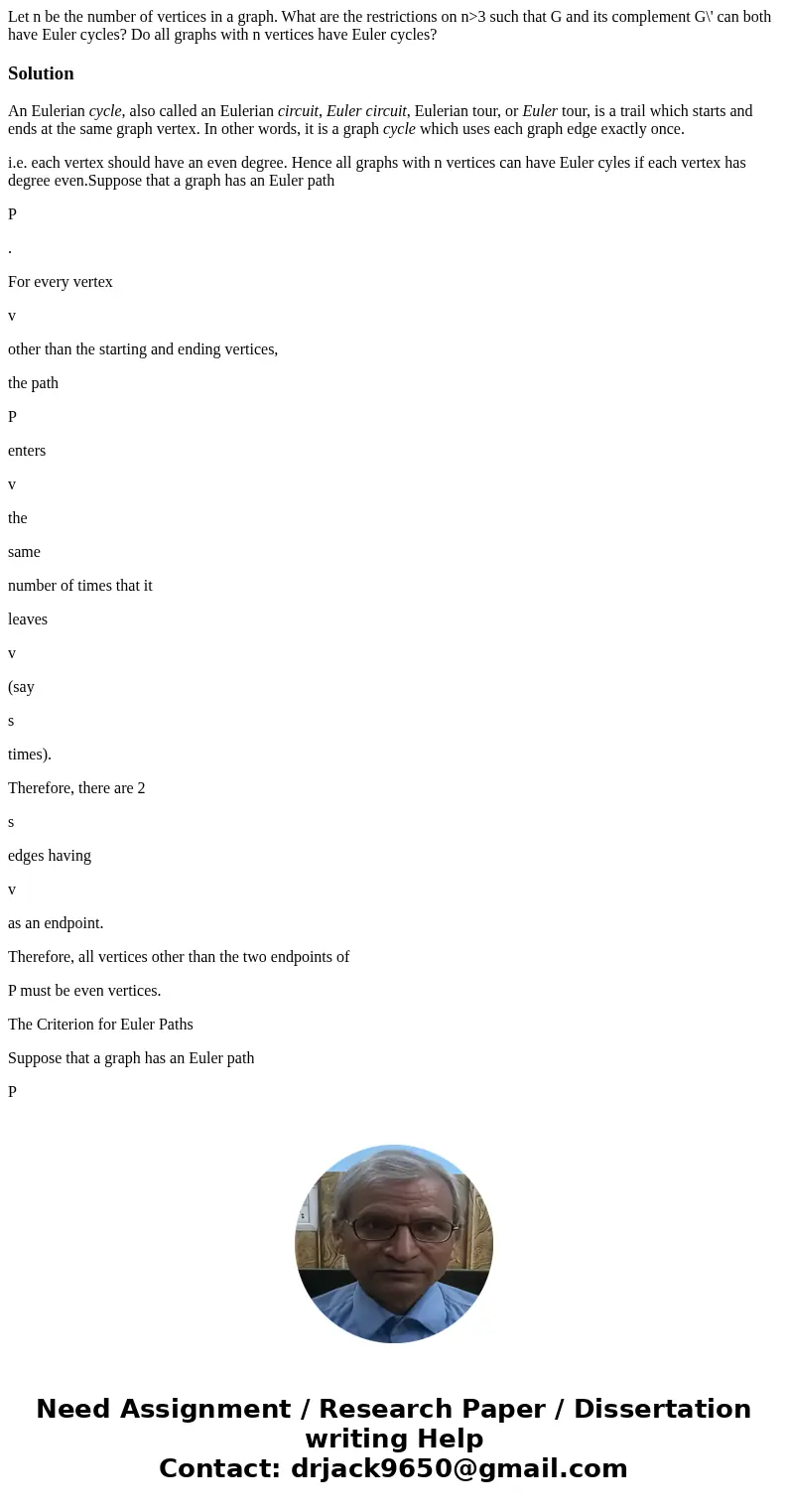Let n be the number of vertices in a graph What are the rest
Let n be the number of vertices in a graph. What are the restrictions on n>3 such that G and its complement G\' can both have Euler cycles? Do all graphs with n vertices have Euler cycles?
Solution
An Eulerian cycle, also called an Eulerian circuit, Euler circuit, Eulerian tour, or Euler tour, is a trail which starts and ends at the same graph vertex. In other words, it is a graph cycle which uses each graph edge exactly once.
i.e. each vertex should have an even degree. Hence all graphs with n vertices can have Euler cyles if each vertex has degree even.Suppose that a graph has an Euler path
P
.
For every vertex
v
other than the starting and ending vertices,
the path
P
enters
v
the
same
number of times that it
leaves
v
(say
s
times).
Therefore, there are 2
s
edges having
v
as an endpoint.
Therefore, all vertices other than the two endpoints of
P must be even vertices.
The Criterion for Euler Paths
Suppose that a graph has an Euler path
P
.
For every vertex
v
other than the starting and ending vertices,
the path
P
enters
v
the
same
number of times that it
leaves
v
(say
s
times).
Therefore, there are 2s edges having v as an endpoint.
Therefore, all vertices other than the two endpoints of
P must be even vertices.
omplement or inverse of a graph G is a graph H on the same vertices such that two distinct vertices of H are adjacent if and only if they are not adjacent in G.
As each vertex in G has even vertices, in H each vertex will be connected to other vertices. If they are even then
G\' have Euler cycles.
I


 Homework Sourse
Homework Sourse